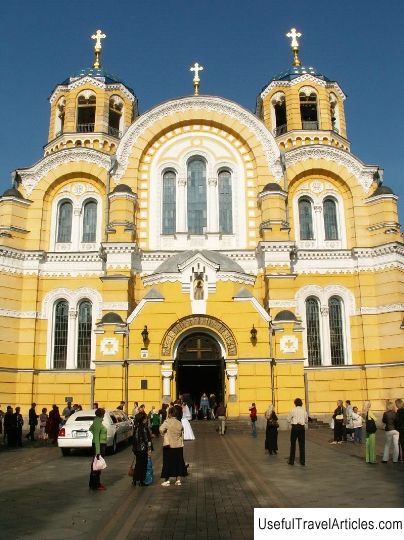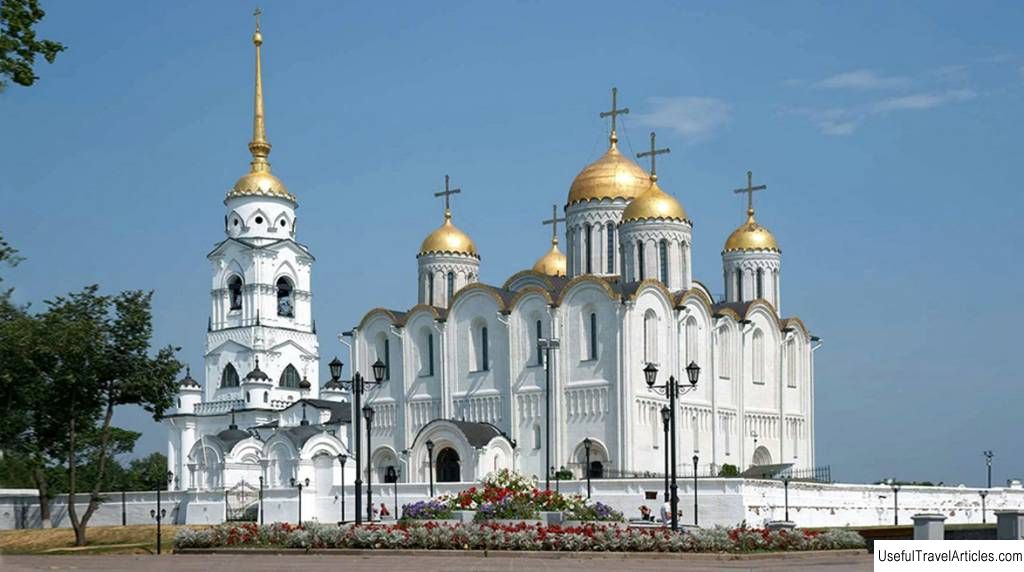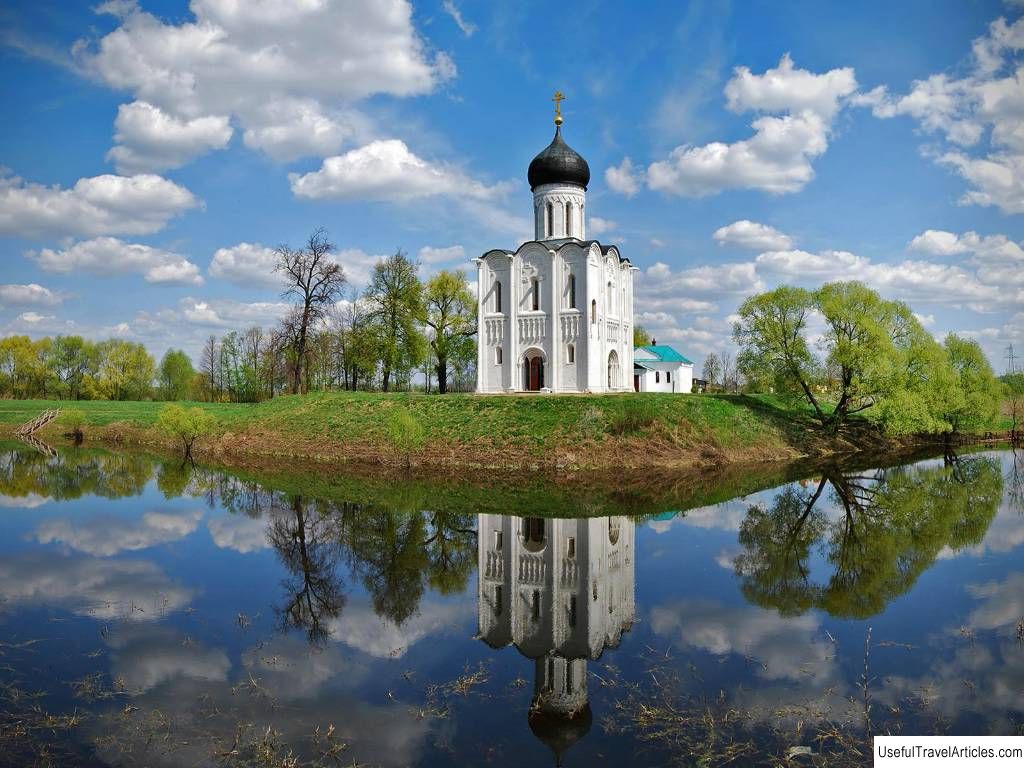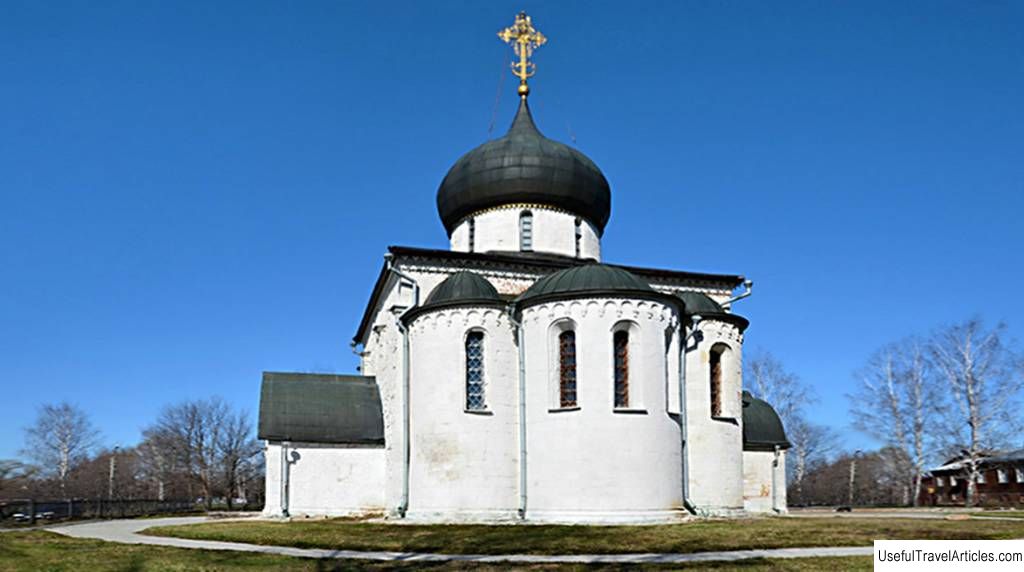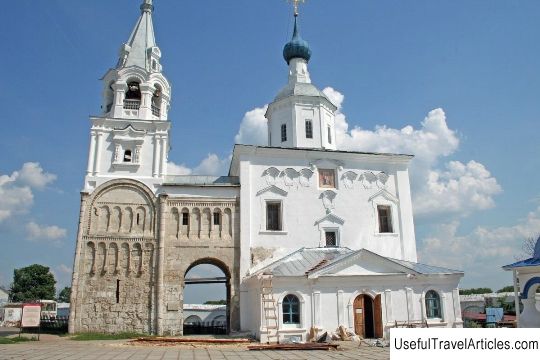Dmitrievsky Cathedral description and photos - Russia - Golden Ring: Vladimir
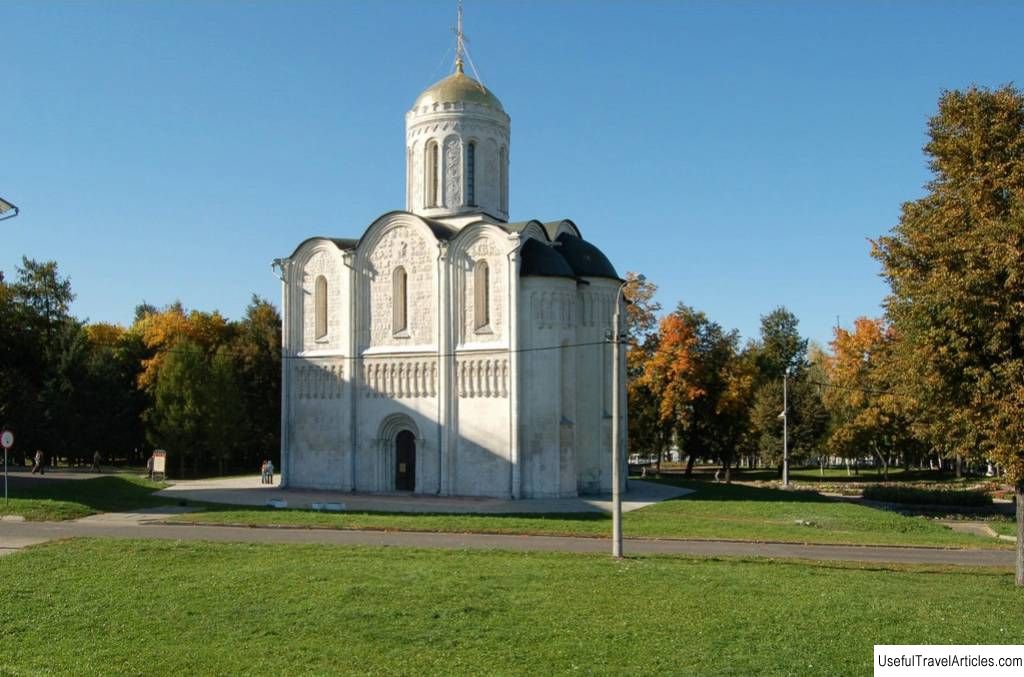
Dmitrievsky Cathedral description and photos - Russia - Golden Ring: Vladimir. Detailed information about the attraction. Description, photos and a map showing the nearest significant objects. Photo and descriptionDmitrievsky Cathedral in Vladimir, built in the XII century, is included in the UNESCO World Heritage List. Its unique white stone carvings with fantastic animals, birds and plants combine Christian and pagan themes and amaze the imagination. Frescoes of the 12th century have been preserved inside. The cathedral is a branch of the Vladimir-Suzdal Museum-Reserve. History of the templeThe Dmitrievsky Cathedral was built under the younger brother of Andrei Bogolyubsky - Vsevolod the Big Nest, the most powerful Russian prince of the 12th century. This is how he is mentioned in the "Lay of Igor's Host." Under him, the principality expanded and influenced all Russian lands from Novgorod to Kiev, its cities grew rich, and arts and crafts flourished in them. The center was the city of Vladimir, elected the capital by his older brother Andrei Bogolyubsky. Vsevolod had twelve children - that is why he was named "Big Nest", and after his death the principality was fragmented and lost its former strength. Vsevolod Big Nest continues the work of his brother - strengthening and decorating Vladimir. He renews the walls of the city, rebuilds and expands the Assumption Cathedral, and builds another nearby - Dmitrievsky, in honor of St. Dmitry Solunsky, his patron saint. The cathedral was built in the 90s of the XII century, scientists argue about its exact dating: perhaps it is 1191, and possibly 1194-97. Unlike the Assumption Cathedral, the Golden Gate and Bogolyubov, in the creation of which, according to N. Tatishchev, Western masters took part, only Russians built the Dmitrievsky Cathedral, the chronicle specifically mentions this. However, the cathedral was built with a clear eye on the Church of the Intercession-on-Nerl near Bogolyubov, and its rich carving matches the medieval architecture of Western Europe. The main shrines of the new temple were sent directly from Thessaloniki (that is, from the city of Thessaloniki) part of St. Dmitry Solunsky and the myrrh-streaming "grave board" - an icon, which, according to legend, was written on the board from the tomb of the holy martyr. Vsevolod endured the veneration of St. Dmitry from Byzantium - he spent his youth in exile in Constantinople, hiding with the emperor Manuel. Subsequently, this icon was transferred to Moscow and is now kept in the Assumption Cathedral of the Moscow Kremlin. A new icon of St. Dmitry for the Assumption Cathedral - she is now in the Tretyakov Gallery. But according to some scholars, the saint depicted here could have some portrait resemblance to Vsevolod himself. Dmitry is depicted in the form of a warrior-ruler - on a throne, in a crown and with a sword half-drawn from its scabbard in his hands. A copy of this icon can now be seen in the cathedral's exposition. The temple was conceived as the home temple of the princely family. It was small, single-domed, very richly decorated outside and inside, and was part of the palace complex: it was surrounded by galleries through which one could get to the palace. In the 16th century, two side-chapels were added to the cathedral - Nikolsky and John the Baptist, a porch and a bell tower. However, according to other researchers, two side-altars in the form of turrets were originally here, like galleries, so the modern look of the cathedral is not equal to the original. During the 17th-18th centuries, the cathedral was repeatedly burned and renovated, and by the beginning of the 19th century it was in disrepair. A special commission was appointed, funds were allocated, and the cathedral was repaired again. He got a classicist portico with columns at the western entrance and a second bell tower. The current, "primitive" appearance of the cathedral is the result of the restoration of 1838-1847, carried out by order of Nicholas I. The galleries were dismantled, the cathedral was cleaned and re-painted in white and yellow tones loved by Nicholas, the dome and walls were reinforced with iron ties. At the same time, old frescoes were discovered - and the cathedral was re-painted, if possible, in the same style. The crumbling white stone reliefs were partially replaced with exact copies. At the end of the 19th century, heating was carried out here - before that the temple was cold, summer. A small belfry is built nearby. The 20th century and the present After the revolution, the temple was immediately transferred to the museum. A restoration commission headed by the artist Igor Grabar worked in it - the same one that cleared the Rublevsky frescoes of the Assumption Cathedral during these years. I. Grabar rediscovered the fragments of the 12th century frescoes. After the war, excavations around the cathedral were conducted by Nikolai Voronin, a leading Soviet specialist in Old Russian architecture and the author of reconstructions of the original appearance of many Vladimir-Suzdal churches. After the war, museum exhibitions dedicated to the architecture of the Vladimir-Suzdal region were located here, then there was a Gallery Heroes of the Soviet Union - natives of Vladimir. Now this exhibition is located in the Golden Gate nearby. Since the mid-70s, the cathedral was closed for a lengthy restoration, which ended only in 2005. The white limestone, which was decaying from time to time, was impregnated with a special protective composition, communications were updated, allowing to maintain a special temperature regime in the building, the cross on the dome was replaced. Now the temple is a branch of the museum, but several times a year, in agreement with museum workers, church services are held. In the cathedral you can see fragments of the paintings that have survived since the 12th century: the Last Judgment, The Procession of the Righteous to Paradise and Borogoditsa. Researchers see in these frescoes the brush of two different authors. Here is an ancient copy of the icon of Dmitry Solunsky, a copy of a silver casket, which was once brought from Solunia and preserved a particle of the saint's attire, and a four-meter cross removed from the dome - it is now in the altar of the cathedral. Roman Illarionovich Vorontsov, Vladimir Governor-General in 1778-83, the brother of the famous diplomat and chancellor Mikhail Vorontsov and the father of the Russian envoy to London Semyon Romanovich Vorontsov, is buried here. The Vorontsovs took part in the coup that brought Elizaveta Petrovna to the throne. And under Catherine II, after the reform and the formation of new provinces, Roman Illarionovich became the governor of Vladimir and became famous for bribery and extortion. His burial has survived with a sculpture erected in 1804 by his sons - it was made in London by order of his son Semyon, and the pyramid over the tombstone was erected by his grandson, Mikhail Vorontsov, Governor of Novorossiysk, who partly financed the renovation of the cathedral in the middle of the 19th century. The burial itself is located at the south wall, but the tombstone was moved to the west during the last restoration. Stone carving The most important decoration of the Dmitrievsky Cathedral is its rich stone carvings along the two upper tiers of the facades. Like the Church of the Intercession on the Nerl, there is an image of St. David is a biblical example of a just and wise ruler, both king and priest. He is depicted here three times - defeating a lion and sitting on a lion throne - a similar image is on the Church of the Intercession on the Nerl. It is surrounded by eagles, lions and leopards - symbols of power - and blessed by angels. Vsevolod himself with five sons is depicted from the northern facade. He holds the younger Vladimir in his arms and four more - Yaroslav, Svyatoslav, George and Konstantin - are standing around. The southern one is decorated with the most unusual story from our point of view - "The Ascension of Alexander the Great to Heaven." This is a medieval Christian legend that tells how one day Alexander caught two huge birds, the size of horses, and tried to fly them into the sky. He climbed higher and higher until he met another bird, which said in a human voice: "Not knowing the earthly, how can you comprehend the heavenly?" This image of Alexander taking off received immense popularity in medieval Europe and was portrayed several times: Alexander was perceived as an ideal image of a great ruler, a unifier of different lands, healer - that is why he was placed on the princely cathedral. Alexander is depicted not with birds, but with griffins, and holding lion cubs in his hands. The feats of Hercules are depicted on the western wall - scenes of him defeating a lion, which rhymes with the images of the conquering lion, King David and Alexander holding the lion. The entire carving of the cathedral as a whole fits into a single concept that emphasizes the sacredness of the princely power. In total, there are more than five hundred different images on the cathedral, most of them are ornamental plants, birds and animals, many of which have a fantastic look. It was perfectly normal for medieval Christians to decorate temples with such semi-pagan images - they revealed the beauty and diversity of the world, were associated with heraldic princely symbols and, in general, with secular power. Here the Dmitrievsky Cathedral contrasts quite sharply with the much more modestly decorated Assumption Cathedral - it is believed that in this way the tastes of the ancient Russian secular nobility were reflected here. However, some studies interpret the abundance of animals and vegetation as an illustration to the psalm “Let every breath glorify the Lord.” On the columnar belt of the cathedral are depicted saints, for example, Boris and Gleb, relatives of Vsevolod. The carving of the cathedral, unfortunately, is not completely preserved in its original form - over the centuries it has been restored, some of the fragments have been removed and put back out of place, but the main compositions and their meaning remained intelligible and readable. note
|











